A Cotton Fabric Composite with Light Mineral Oil and Magnetite Nanoparticles: Effects of a Magnetic Field and Uniform Compressions on Electrical Conductivity
Abstract
:1. Introduction
2. Materials and Methods
2.1. Magnetic Composite (MC) Manufacturing
- Cotton fabric (GB), with dimensions of 30 × 30 × 0.4 mm3 and a volume of , approximately equal to that of cotton microfibers. The mass of the GB fabric, measured with the help of an analytic balance (AXIS 60 type), was . The mass density of the GB fabric was .
- Magnetic liquid (ML), type EFH-1, was produced by Ferrotec (Santa Clara, CA, USA) [21] and bought from Magneo Smart (Sendreni, Romania) [22]. The ML was based on light mineral oil from Sigma-Aldrich Chemie GmbH (Taufkirchen, Germany) number CAS 8012-95-1, with standard density and viscosity at , and magnetite nanoparticles (). ML had the following technical characteristics:
2.2. Electrical Device (ED) Manufacturing
- A simple textolite plate (PCu), coated with copper on one side and with dimensions of 100 × 75 × 0.8 mm3, from Electronic Light Tech (Bucharest, Romania) [25]. The PCu was based on an epoxy resin (FR4 type) reinforced with fiberglass, and one face was covered with a 35 μm thick copper layer.
- An MC with dimensions of 30 × 30 × 0.4 mm3 and the components from Table 1.
- A hypoallergenic patch on silk support type Omniplast, bought from S. C. Hartmann S. R. L. (Bucharest, Romania) [26]. The patch was a self-adhesive tape with a width of 5 cm, thickness of 0.22 mm, and length of 20 m. It was high-temperature- and wear-resistant. We denoted this patch as SAT.
- From the PCu, we cut two identical pieces, each with dimensions of 30 × 30 × 0.8 mm3.
- On the copper side of each plate, two copper conductors were attached via hot welding.
- The PCu plates and MC were arranged in a sandwich-type structure so that MC was in contact with the copper sides of two PCu boards.
- Strips with dimensions 10 cm × 2.5 cm were cut from the SAT, with which the assembly was reinforced. Through this consolidation, electrical contact was made between the copper foil of the PCu and MC. At the end of this stage, the ED device was obtained.
2.3. Experimental Methods and Measurements
3. Results and Discussion
4. Conclusions
Author Contributions
Funding
Data Availability Statement
Conflicts of Interest
References
- Amirov, A.; Baraban, I.; Panina, L.; Rodionova, V. Direct Magnetoelectric Effect in a Sandwich Structure of PZT and Magnetostrictive Amorphous Microwires. Materials 2020, 13, 916. [Google Scholar] [CrossRef] [PubMed]
- Xu, X. Chapter 17—Intelligent composite materials for use as sensors and actuators. In Composite Materials; Low, I.-M., Yu, D.Y., Eds.; Elsevier: Amsterdam, The Netherlands, 2021; pp. 465–487. [Google Scholar]
- Macagnano, A.; Avossa, J. Chapter 11—Nanostructured composite materials for advanced chemical sensors. In Advanced Nanomaterials, Advances in Nanostructured Materials and Nanopatterning Technologies; Guarino, V., Focarete, M.L., Pisignano, D., Eds.; Elsevier: Amsterdam, The Netherlands, 2020; pp. 297–332. [Google Scholar]
- Xu, D.; Ouyang, Z.; Dong, Y.; Yu, H.-Y.; Zheng, S.; Li, S.; Tam, K.C. Robust, Breathable and Flexible Smart Textiles as Multifunctional Sensor and Heater for Personal Health Management. Adv. Fiber Mater. 2023, 5, 282–295. [Google Scholar] [CrossRef]
- Feng, Q.; Wan, K.; Zhu, T.; Fan, X.; Zhang, C.; Liu, T. Stretchable, Environment-Stable, and Knittable Ionic Conducting Fibers Based on Metallogels for Wearable Wide-Range and Durable Strain Sensors. ACS Appl. Mater. Interfaces 2022, 14, 4542–4551. [Google Scholar] [CrossRef] [PubMed]
- Madej-Kiełbik, L.; Gzyra-Jagieła, K.; Jóźwik-Pruska, J.; Dziuba, R.; Bednarowicz, A. Biopolymer Composites with Sensors for Environmental and Medical Applications. Materials 2022, 15, 7493. [Google Scholar] [CrossRef] [PubMed]
- Hirohata, A.; Yamada, K.; Nakatani, Y.; Prejbeanu, I.-L.; Diény, B.; Pirro, P.; Hillebrands, B. Review on spintronics: Principles and device applications. J. Magn. Magn. Mater. 2020, 509, 166711. [Google Scholar] [CrossRef]
- Zheng, C.; Zhu, K.; De Freitas, S.C.; Chang, J.-Y.; Davies, J.E.; Eames, P.; Freitas, P.P.; Kazakova, O.; Kim, C.; Leung, C.-W. Magnetoresistive sensor development roadmap (non-recording applications). IEEE Trans. Magn. 2019, 55, 0800130. [Google Scholar] [CrossRef]
- Nelson, T.; Jin, S.; Hackwood, S.; Beni, G. Shear-sensitive magnetoresistive robotic tactile sensor. IEEE Trans. Magn. 1986, 22, 394–396. [Google Scholar] [CrossRef]
- Clark, J.J. A magnetic field based compliance matching sensor for high resolution, high compliance tactile sensing. In Proceedings of the 1988 IEEE International Conference on Robotics and Automation, Philadelphia, PA, USA, 24–29 April 1988; pp. 772–777. [Google Scholar] [CrossRef]
- Adl, P.; Memnon, Z.; Mapps, D.; Rakowski, R. Serpentine magnetoresistive elements for tactile sensor applications. IEEE Trans. Magn. 1990, 26, 2047–2049. [Google Scholar] [CrossRef]
- Chi, C.; Sun, X.; Xue, N.; Li, T.; Liu, C. Recent progress in technologies for tactile sensors. Sensors 2018, 18, 948. [Google Scholar] [CrossRef]
- Bica, I.; Anitas, E.M.; Chirigiu, L. Hybrid Magnetorheological Composites for Electric and Magnetic Field Sensors and Transducers. Nanomaterials 2020, 10, 2060. [Google Scholar] [CrossRef]
- Simayee, M.; Montazer, M. A protective polyester fabric with magnetic properties using mixture of carbonyl iron and nano carbon black along with aluminium sputtering. J. Ind. Text. 2018, 47, 674–685. [Google Scholar] [CrossRef]
- Li, W.-p.; Zhu, l.-q.; Gu, J.; Liu, H.-c. Microwave absorption properties of fabric coated absorbing material using modified carbonyl iron power. Compos. B Eng. 2011, 42, 626–630. [Google Scholar] [CrossRef]
- Chen, Y.; Zhenyu Lei, Z.; Wu, H.; Zhu, C.; Gao, P.; Ouyang, Q.; Qi, L.-H.; Qin, W. Electromagnetic absorption properties of graphene/Fe nanocomposites. Mater. Res. Bull. 2013, 48, 3362–3366. [Google Scholar] [CrossRef]
- Grosu, M.C.; Lupu, I.G.; Cramariuc, O.; Hristian, L. Magnetic cotton yarns—Optimization of magnetic properties. J. Text. Inst. 2016, 107, 757–765. [Google Scholar] [CrossRef]
- Grosu, M.C.; Lupu, I.G.; Cramariuc, O.; Hogas, H.I. Fabrication and characterization of magnetic cotton yarns for textile applications. J. Text. Inst. 2018, 109, 1348–1359. [Google Scholar] [CrossRef]
- Zhou, Y.; Zhu, W.; Zhang, L.; Gong, J.; Zhao, D.; Liu, M.; Lin, L.; Meng, Q.; Thompson, R.; Sun, Y. Magnetic properties of smart textile fabrics through a coating method with NdFeB flake-like microparticles. J. Eng. Fibers Fabr. 2019, 14, 1558925019865708. [Google Scholar] [CrossRef]
- Bica, I.; Anitas, E.M. Magnetic field intensity effect on electrical conductivity of magnetorheological biosuspensions based on honey, turmeric and carbonyl iron. J. Ind. Eng. Chem. 2018, 64, 276–283. [Google Scholar] [CrossRef]
- Ferrotec. Available online: www.ferrotec.com (accessed on 28 March 2023).
- Magneo Smart. Available online: https://magneo-smart.ro/ (accessed on 28 March 2023).
- Lee, W.-K.; Ilavsky, J. Particle size distribution in ferrofluid macro-clusters. J. Magn. Magn. Mater. 2013, 330, 31–36. [Google Scholar] [CrossRef]
- Franklin, T.A. Ferrofluid Flow Phenomena. Master’s Thesis, Massachusetts Institute of Technology, Cambridge, MA, USA, June 2003. [Google Scholar]
- Electronic Light Tech. Available online: https://electroniclight.ro/ (accessed on 28 March 2023).
- S. C. Hartmann S. R. L. Available online: https://www.hartmann.info/ro-RO/ (accessed on 28 March 2023).
- Ercuta, A. Sensitive AC Hysteresigraph of Extended Driving Field Capability. IEEE Trans. Instrum. Meas. 2020, 69, 1643–1651. [Google Scholar] [CrossRef]
- Bica, I.; Iacobescu, G.-E. Composites Based on Cotton Microfibers Impregnated with Magnetic Liquid for Magneto-Tactile Sensors. Materials 2023, 16, 3222. [Google Scholar] [CrossRef]
- Sadat, M.E.; Bud’ko, S.L.; Ewing, R.C.; Xu, H.; Pauletti, G.M.; Mast, D.B.; Shi, D. Effect of Dipole Interactions on Blocking Temperature and Relaxation Dynamics of Superparamagnetic Iron-Oxide (Fe3O4) Nanoparticle Systems. Materials 2023, 16, 496. [Google Scholar] [CrossRef] [PubMed]
- Genc, S. Synthesis and Properties of Magnethoreological (MR) Fluids. Ph.D. Thesis, University of Pittsburgh, Pittsburgh, PA, USA, 2003. [Google Scholar]
- Odenbach, S.; Thurm, S. Magnetic fluids. In Magnetoviscous Effects in Ferrofluids; Lecture Notes in Physics; Springer: Berlin/Heidelberg, Germany, 2002; Volume 71. [Google Scholar] [CrossRef]
- Vasilyeva, M.; Nagornov, D.; Orlov, G. Research on Dynamic and Mechanical Properties of Magnetoactive Elastomers with High Permeability Magnetic Filling Agent at Complex Magneto-Temperature Exposure. Materials 2021, 14, 2376. [Google Scholar] [CrossRef] [PubMed]
- Bica, I.; Anitas, E.M. Magnetic flux density effect on electrical properties and visco-elastic state of magnetoactive tissues. Compos. Part B Eng. 2019, 15, 13–19. [Google Scholar] [CrossRef]
- Kchit, N.; Bossis, G. Electrical resistivity mechanism in magnetorheological elastomer. J. Phys. D Appl. Phys. 2009, 42, 105505. [Google Scholar] [CrossRef]
- Bica, I.; Iacobescu, G.-E.; Chirigiu, L.-M.-E. Magneto-Tactile Sensor Based on a Commercial Polyurethane Sponge. Nanomaterials 2022, 12, 3231. [Google Scholar] [CrossRef]
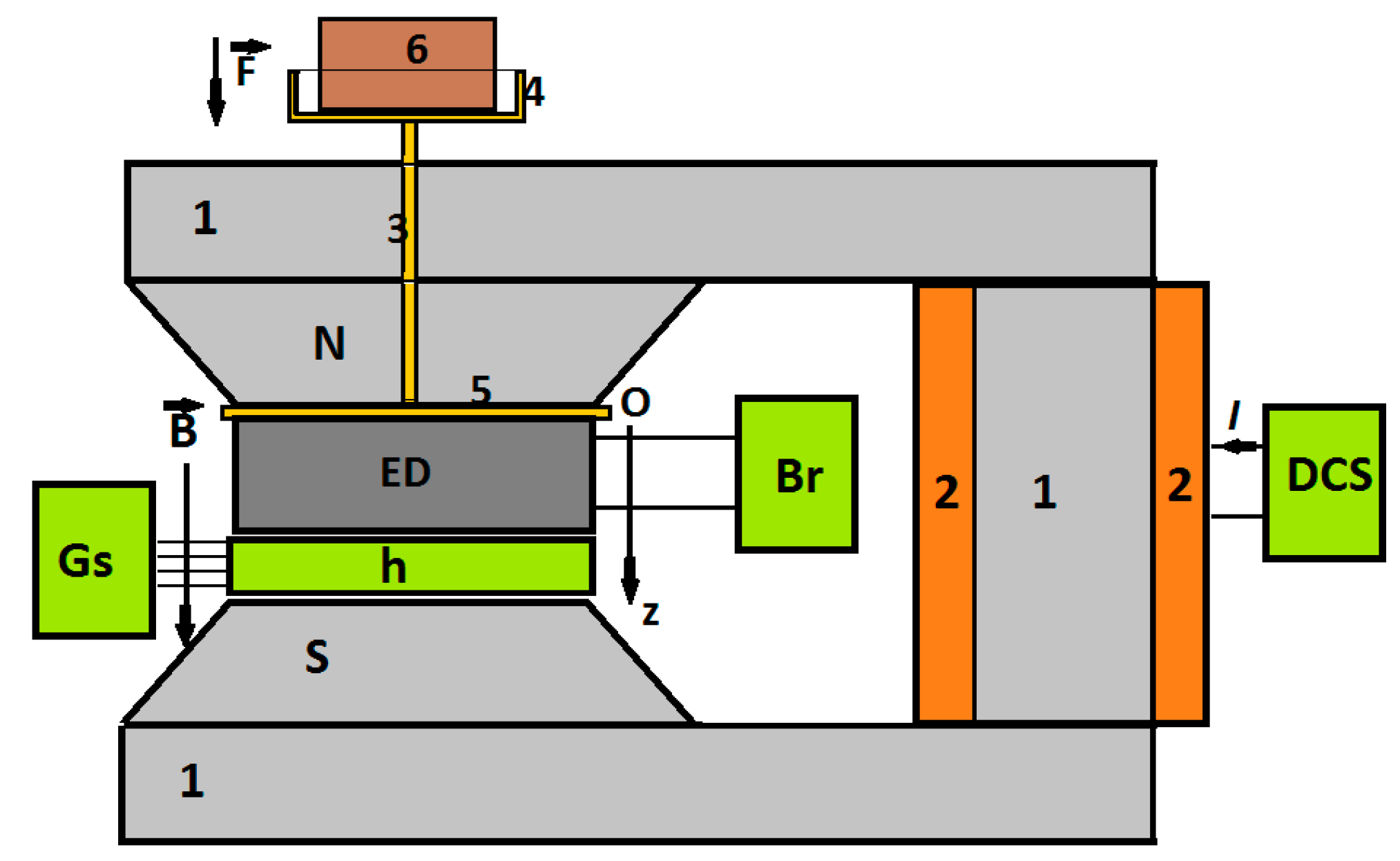
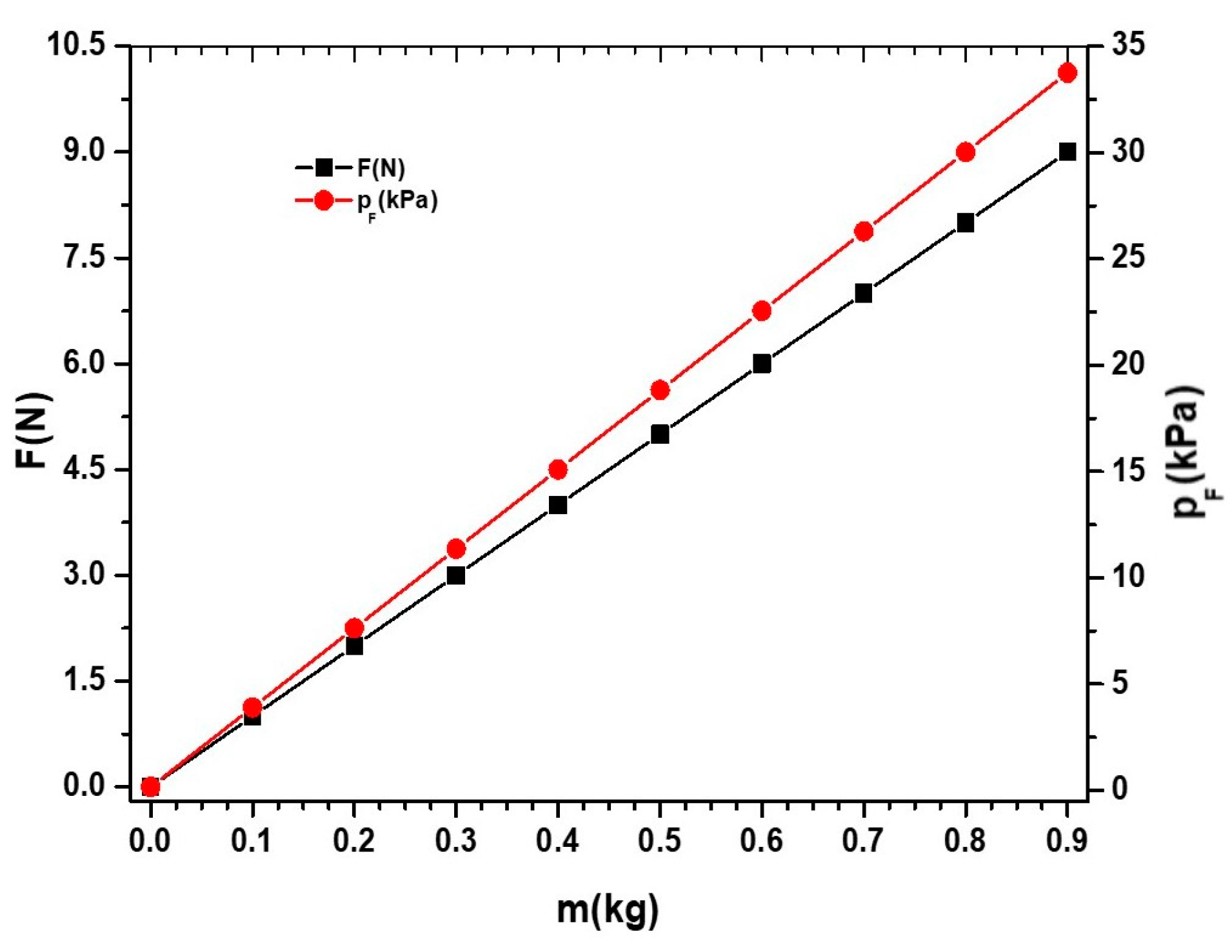
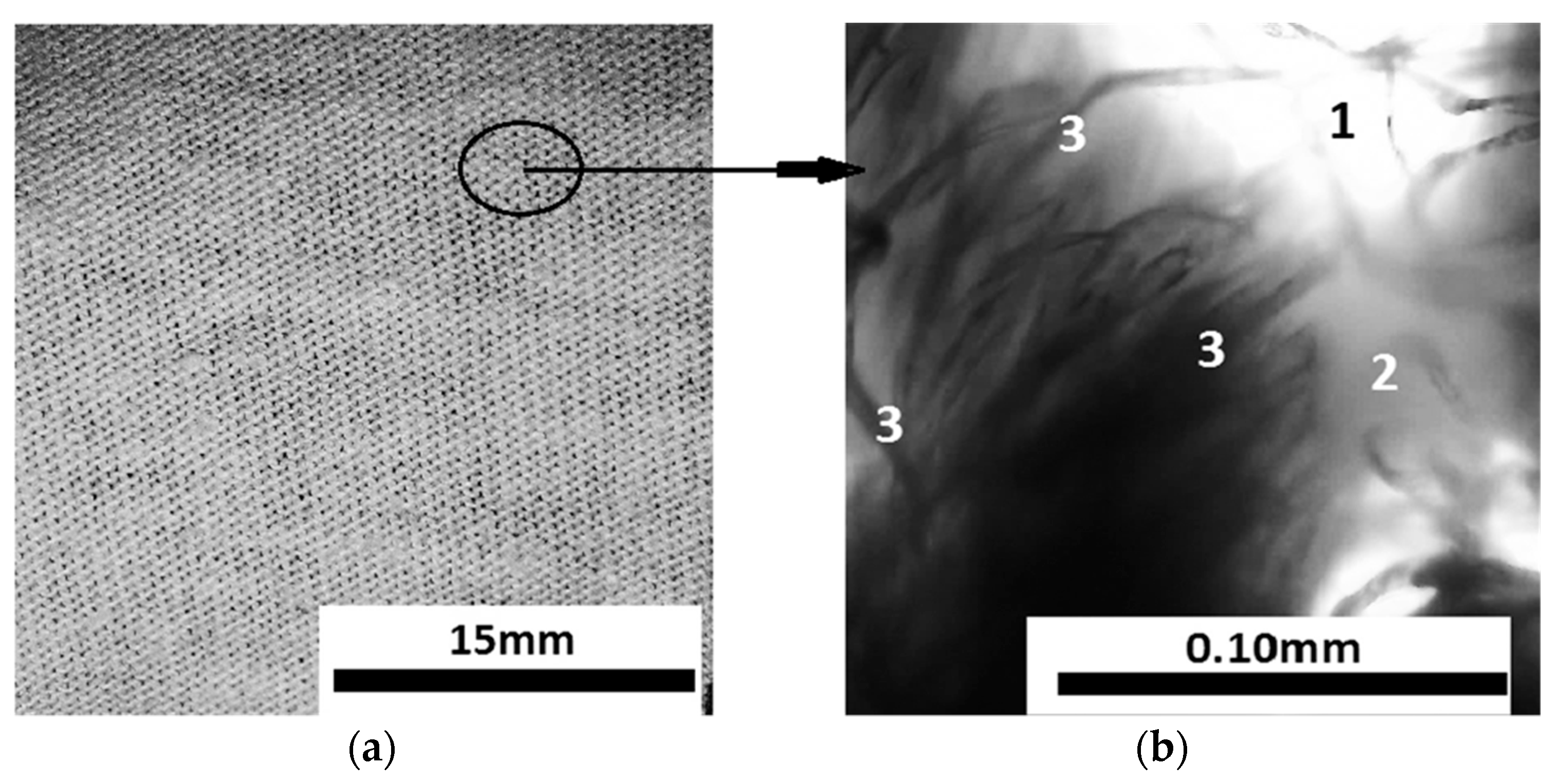
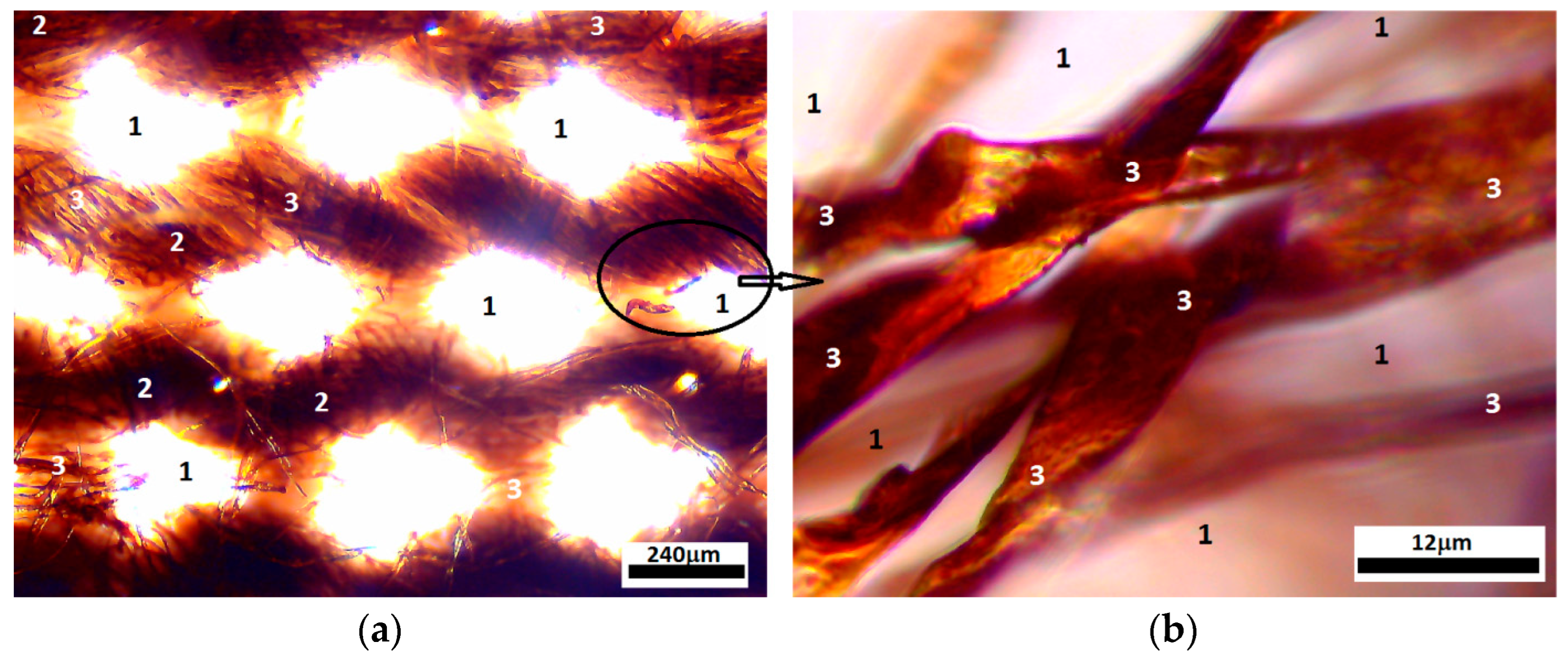


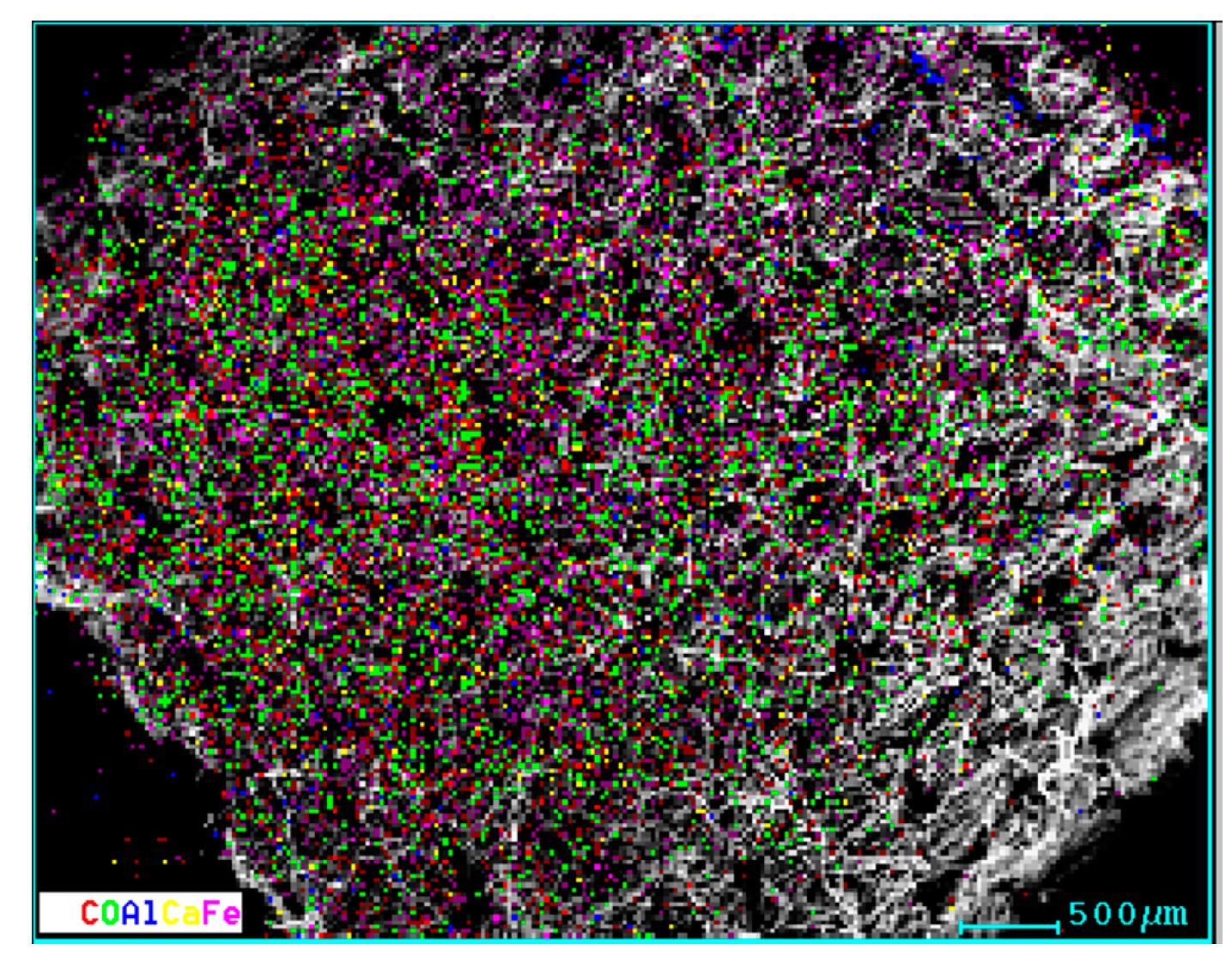


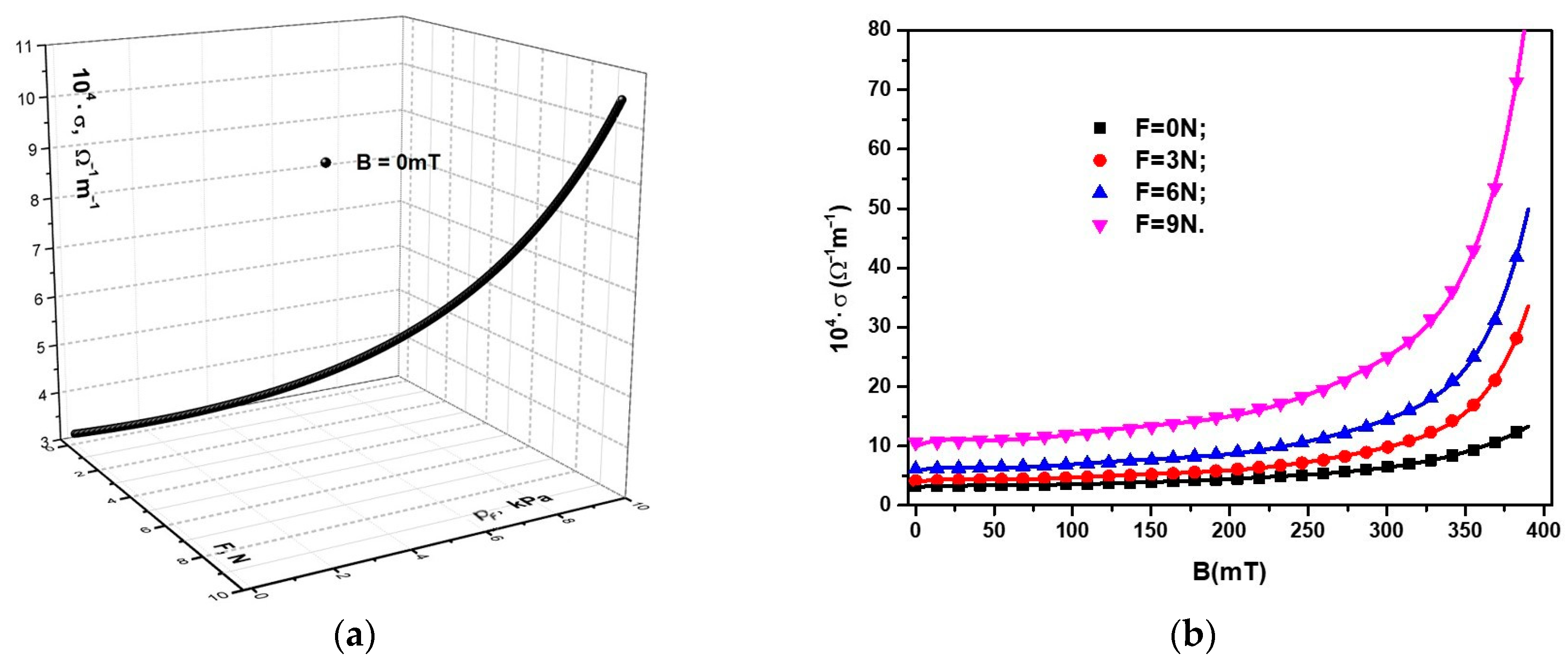
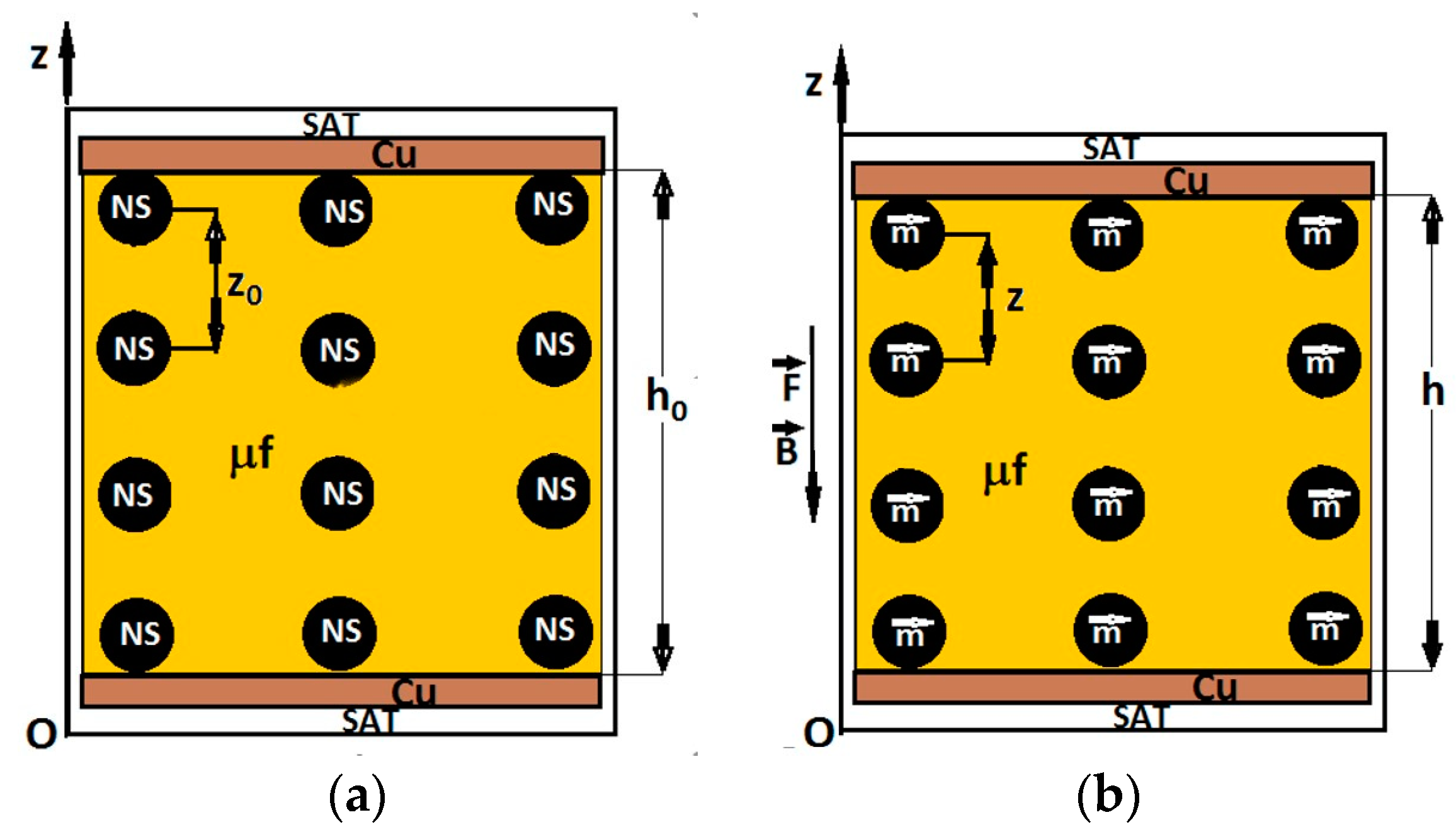

| Sample | ||||||
|---|---|---|---|---|---|---|
| MC | 0.039 | 0.300 | 0.021 | 11 | 83 | 7 |
| Element | ||
|---|---|---|
| C | 58.57 | 69.64 |
| O | 30.80 | 27.53 |
| Al | 0.25 | 0.13 |
| Ca | 0.26 | 0.09 |
| Fe | 10.12 | 2.59 |
| F (N) | ||
|---|---|---|
| 0 | 0 | 3.229 |
| 100 | 3.602 | |
| 300 | 3.458 | |
| 3 | 0 | 4.167 |
| 100 | 4.705 | |
| 300 | 9.779 | |
| 9 | 0 | 10.600 |
| 100 | 12.000 | |
| 300 | 24.000 |
Disclaimer/Publisher’s Note: The statements, opinions and data contained in all publications are solely those of the individual author(s) and contributor(s) and not of MDPI and/or the editor(s). MDPI and/or the editor(s) disclaim responsibility for any injury to people or property resulting from any ideas, methods, instructions or products referred to in the content. |
© 2023 by the authors. Licensee MDPI, Basel, Switzerland. This article is an open access article distributed under the terms and conditions of the Creative Commons Attribution (CC BY) license (https://creativecommons.org/licenses/by/4.0/).
Share and Cite
Iacobescu, G.-E.; Bunoiu, M.; Bica, I.; Sfirloaga, P.; Chirigiu, L.-M.-E. A Cotton Fabric Composite with Light Mineral Oil and Magnetite Nanoparticles: Effects of a Magnetic Field and Uniform Compressions on Electrical Conductivity. Micromachines 2023, 14, 1113. https://doi.org/10.3390/mi14061113
Iacobescu G-E, Bunoiu M, Bica I, Sfirloaga P, Chirigiu L-M-E. A Cotton Fabric Composite with Light Mineral Oil and Magnetite Nanoparticles: Effects of a Magnetic Field and Uniform Compressions on Electrical Conductivity. Micromachines. 2023; 14(6):1113. https://doi.org/10.3390/mi14061113
Chicago/Turabian StyleIacobescu, Gabriela-Eugenia, Madalin Bunoiu, Ioan Bica, Paula Sfirloaga, and Larisa-Marina-Elisabeth Chirigiu. 2023. "A Cotton Fabric Composite with Light Mineral Oil and Magnetite Nanoparticles: Effects of a Magnetic Field and Uniform Compressions on Electrical Conductivity" Micromachines 14, no. 6: 1113. https://doi.org/10.3390/mi14061113





